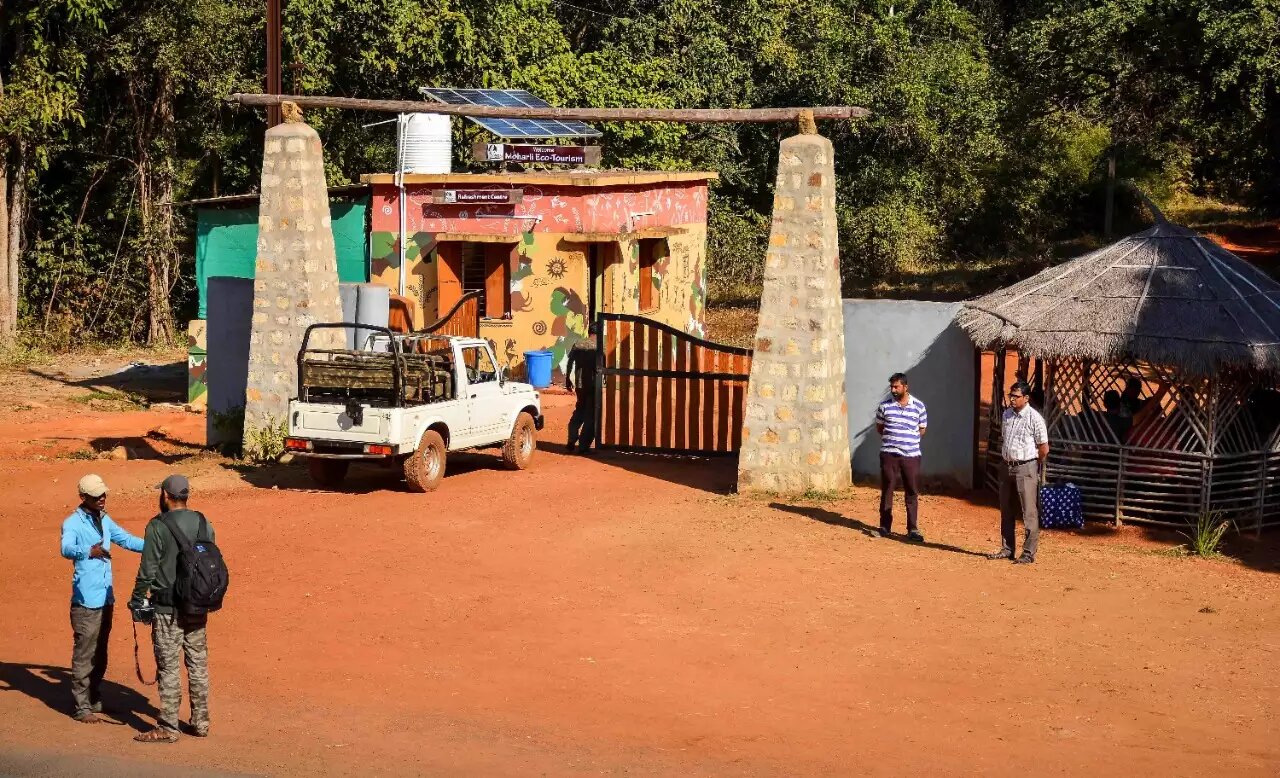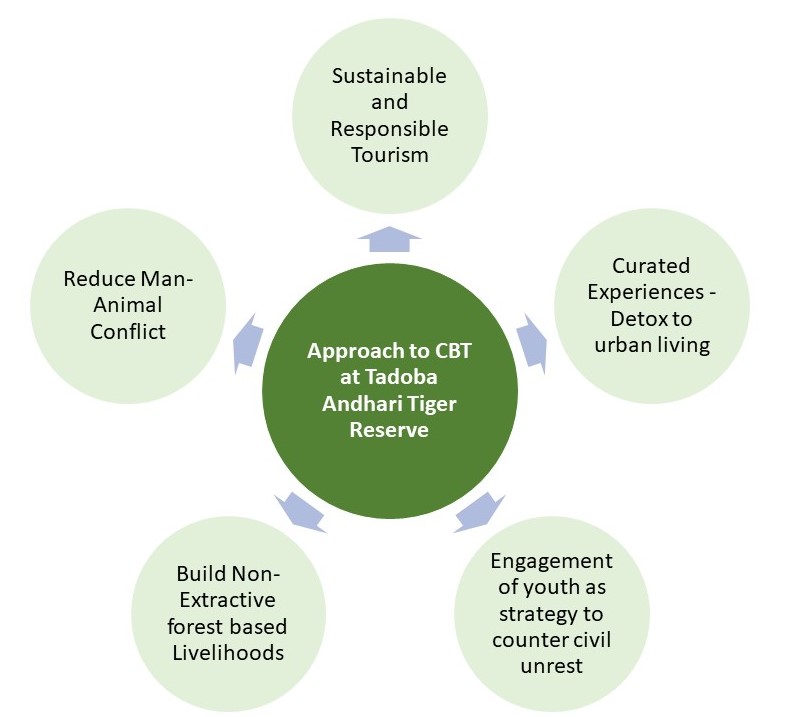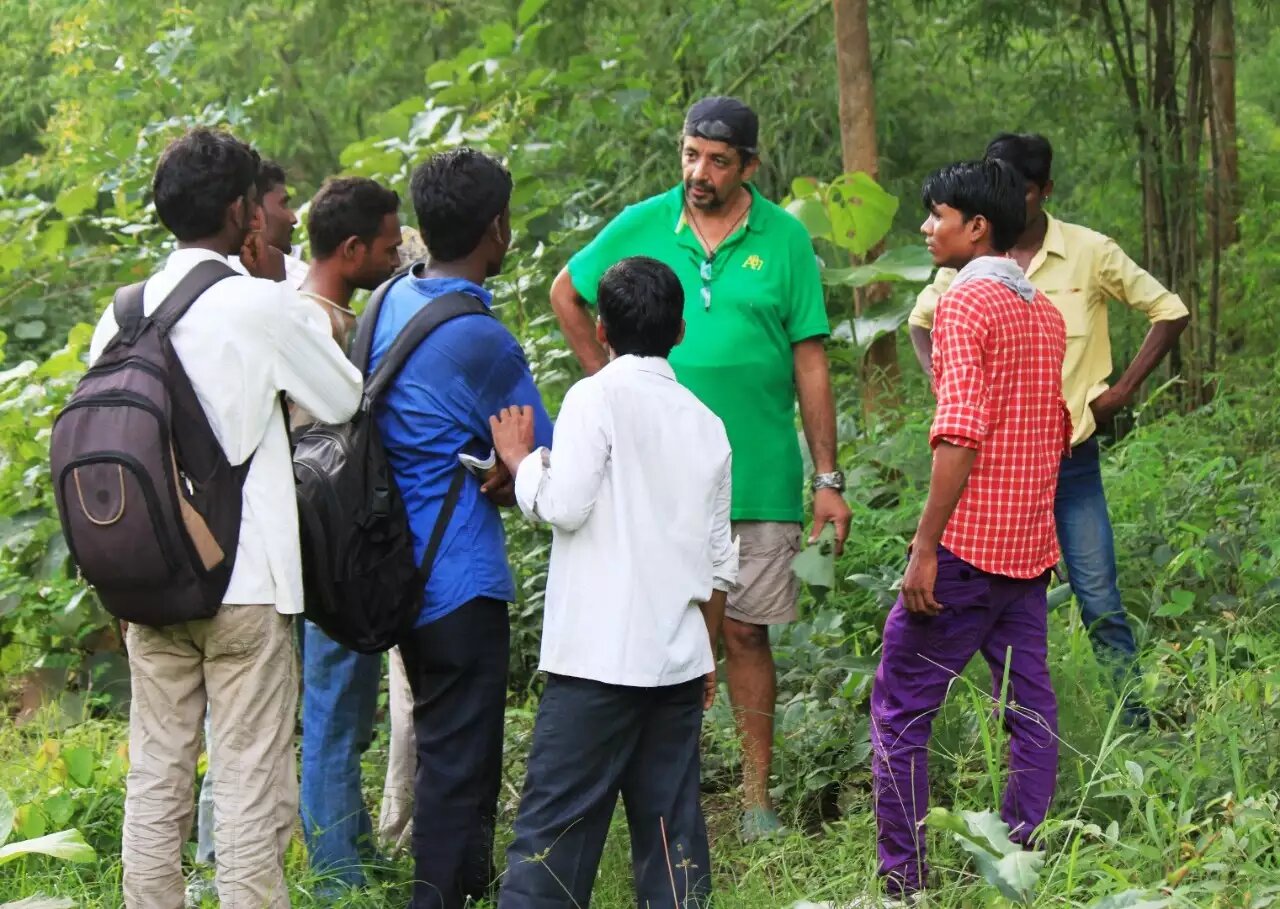


Case Study
Synergizing Community Based Tourism and Wildlife Conservation at Tadoba Andhari Tiger Reserve
The need for basic natural resources for survival place human habitations of remote indigenous communities living at the edge of protected areas against wildlife, causing man-animal conflicts. These challenges are observed in many places across India, and perhaps the world. However, there are some commendable examples of how an appropriate balance has been achieved against these conflicting priorities. The Tadoba Andhari Tiger Reserve is one such outstanding example, where wildlife and forest conservation efforts were synergized with community-based tourism. Destinopedia’s Conservation and CBT Expert, Anirudh Chaoji played a key role in achieving this success as an Advisor to the Forest Department of Government of Maharashtra.
Tadoba Andhari Tiger Reserve is a combination of Tadoba National Park and Andhari Widlife Sanctuary along with their surrounding areas. Covering a total area of over 1700 sq kms, Tadoba provides a habitat for over 110 tigers and 250 leopards.
The challenging part is that this wildlife co-exists with 130,000 human beings in almost 80 Buffer zone villages. Single crop farming is the mainstay of the local population, while many also find employment at Chandrapur Thermal Power Station. With limited employment opportunities, un-employed youth are at the risk of falling into anti-social activities and extremist ideologies. With sustained efforts and comprehensive approach, currently over a 1000 youth now find employment connected to the Forest Department’s Eco-tourism initiatives.

The antagonism between local communities and Government seeking to enforce conservation initiatives, common to wildlife habitats and Protected Areas also existed in Tadoba till around 2011-2012. Over time the process of trust building started, and the collaborative efforts of Government, local communities and experts has set this destination on a virtuous cycle and sustainable path. Tangible positive outcomes of these transformations include – fewer forest fires, negligible sand smuggling and poaching (though accidental poisoning and electrocution deaths have been reported). Consequently, today the tiger numbers have significantly increased.
Destinopedia’s expert supported wider engagement with communities, local opinion leaders, and multiple-government departments to arrive at a set of strategic interventions to drive positive change. The key 5 strategies deployed are:
a) Reduce Man-animal conflicts: Women often ventured into the forests to collect firewood, placing them confronting wild-life. Without access to toilets, women entered forests to relieve themselves before dawn or after dusk, the times wildlife are active. Beyond the risk of confronting the big cats and predators, they were also at risk from scorpions and snakes. Excess fluorides and iron in ground water caused severe health issues and took women in search of freshwater streams.

Toilets were built in many villages in partnership with NGOs and the beneficiary families contributed as well. School students were mobilised to educate their parents, to ensure usage of the toilets built. Cooking gas was made available to families with two refill cylinders for every connection, ensuring continuity of supply of cooking gas. Villagers also soon learnt that approximately 3 days of work at NREGA (Rural Employment Guarantee Program) would earn them sufficient wages to purchase a gas cylinder that was typically adequate for 45-60 days. These measures collectively ensured that they did not have to go into the forests as often. Further, the Forest Department provided very simple and durable candle (replaceable) water filters that were effective against iron and fluoride.
b) Build Non-Extractive Forest based livelihoods: With negligible employment opportunities for low-skill levels, forest is the only asset and resource for the communities in the buffer zones. Venturing into the forests was also driven by need to collect Non-Timber Forest Produce and other minor forest produce to earn a livelihood. To reduce reliance on such extractive forest-based livelihoods, eco-tourism initiatives provided the opportunity to maintain the community’s linkage with the forest and build their relationship as the protector of their natural heritage.
c) Engagement of youth as strategy to counter civil unrest: Providing training, developing skills and communication capabilities enabled youth to take on eco-tourism driven livelihoods, and exposing them to the world beyond through their interactions with tourists. This reduced their susceptibility to drift into naxalism and other anti-social extremism. Beyond tourism, youth were also supported in taking on livelihoods in making agarbatti (perfume sticks), tailoring, driving and others.

d) Sustainable and Responsible Tourism:
From the supply-side perspective, efforts were taken to make the tourism offering sustainable and encourage responsible tourist behavior. About 21 gates were made operational for tourist safaris, thus dispersing the tourist volume and environmental impact. Over 12 activities and experiences were curated and offered to tourists, thus deepening tourist-engagement and creating unique memories. Tourist accommodations were encouraged to moderate luxury and natural source consumption. The local tourism economy thus supports direct and indirect livelihoods across 30 villages.e) Curated Experiences – a detox to urban living: Apart from the community and environmental perspectives, sustainable tourism also requires offering experiences that are highly sought after. For the harried urban visitors from metropolitan cities, the idyllic pace of village life, farming, organic agriculture, nature interpretation and other such offerings that take the pressure of protected areas were introduced.
Today, the village communities in the buffer zone are the greatest support systems for Tadoba forest and wildlife management. While the communities have kept poachers and others with ill intentions at bay, the Tadoba Management has worked extensively at creating a conducive environment for wildlife with sprawling grasslands, widespread waterbodies and effective protection.
Tadoba now is considered a safe breeding ground for wildlife including tigers. As a result tigers born here have been observed to migrate to neighboring forests. Experts of Destinopedia can take pride in having played a part in helping achieve a sustainable ecological balance in Tadoba in which the once hostile local communities are now an integral part.

